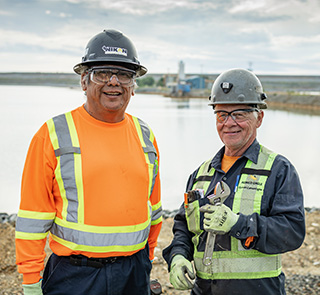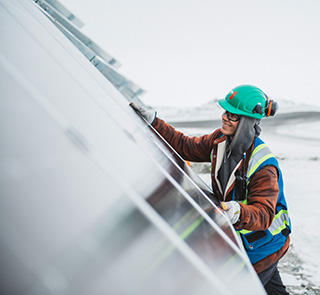Winners

2025
Agnico Eagle (Community Engagement)
Community Engagement Excellence
First Reconciliation Action Plan (RAP) with Indigenous Peoples
Agnico Eagle’s inaugural RAP, which outlines 40 actions under seven pillars, was developed collaboratively with Indigenous communities, employees, stakeholders and rights-holders. It was the first of its kind published by a Canadian mining company and reinforces the Company’s dedication to fostering positive relationships and supporting Indigenous Peoples globally.
While various programs and initiatives to benefit Indigenous Peoples have been in place for many years across Agnico Eagle’s operations, the RAP represents an important step in integrating these activities into a central, comprehensive strategy. It serves as a tool to enhance the Company’s efforts toward reconciliation, enabling effective implementation, continuous monitoring and the flexibility to adapt as needed. Importantly, the RAP complements and strengthens Agnico Eagle’s existing efforts and partnerships, providing opportunities to learn, adapt and leverage successful approaches across its operations.

2025
Rio Tinto (Enviromental Excellence)
Enviromental Excellence
Diavik Diamond Mine Solar Plant
Rio Tinto’s 3.5 megawatt capacity solar power plant at Diavik Diamond Mine is the largest off-grid solar power plant across Canada’s territories.
The 6,620-panel facility is expected to generate 4.2 million kilowatt-hours of solar energy annually, reducing diesel consumption at Diavik by one million litres per year and cutting greenhouse gas (GHG) emissions by 2,900 tonnes of CO2 equivalent. This is comparable to removing 630 cars from the road each year.
The solar power plant will provide up to 25% of Diavik’s electricity during closure work, with commercial production at the mine expected to end in 2026 and closure to run until 2029. The facility is equipped with bi-facial panels which not only generate energy from direct sunlight, but also from the light that reflects off the snow that covers Diavik for most of the year.
The solar project complements a wind power plant at Diavik, which has been operating since 2012 and is the largest wind power installation in Canada’s North, having generated over 195 million kilowatt-hours of electricity since activation.
The project was supported by C$3.3 million in funding from the Government of the Northwest Territories’ Large Emitters GHG Reducing Investment Grant Program.
It is the first project in the Northwest Territories to benefit from funding from the Large Emitters Grant, which sets aside a portion of carbon tax paid by large operations such as Diavik for projects that commit to GHG reduction projects in the territory.
Construction began in February 2024, contracted to Whitehorse-based Solvest Inc. and the Indigenous-owned Tłıchǫ Investment Corporation, with support from Diavik. Approximately 30% of the construction workforce came from the Tłıchǫ Investment Corporation.
 - dev.png)

